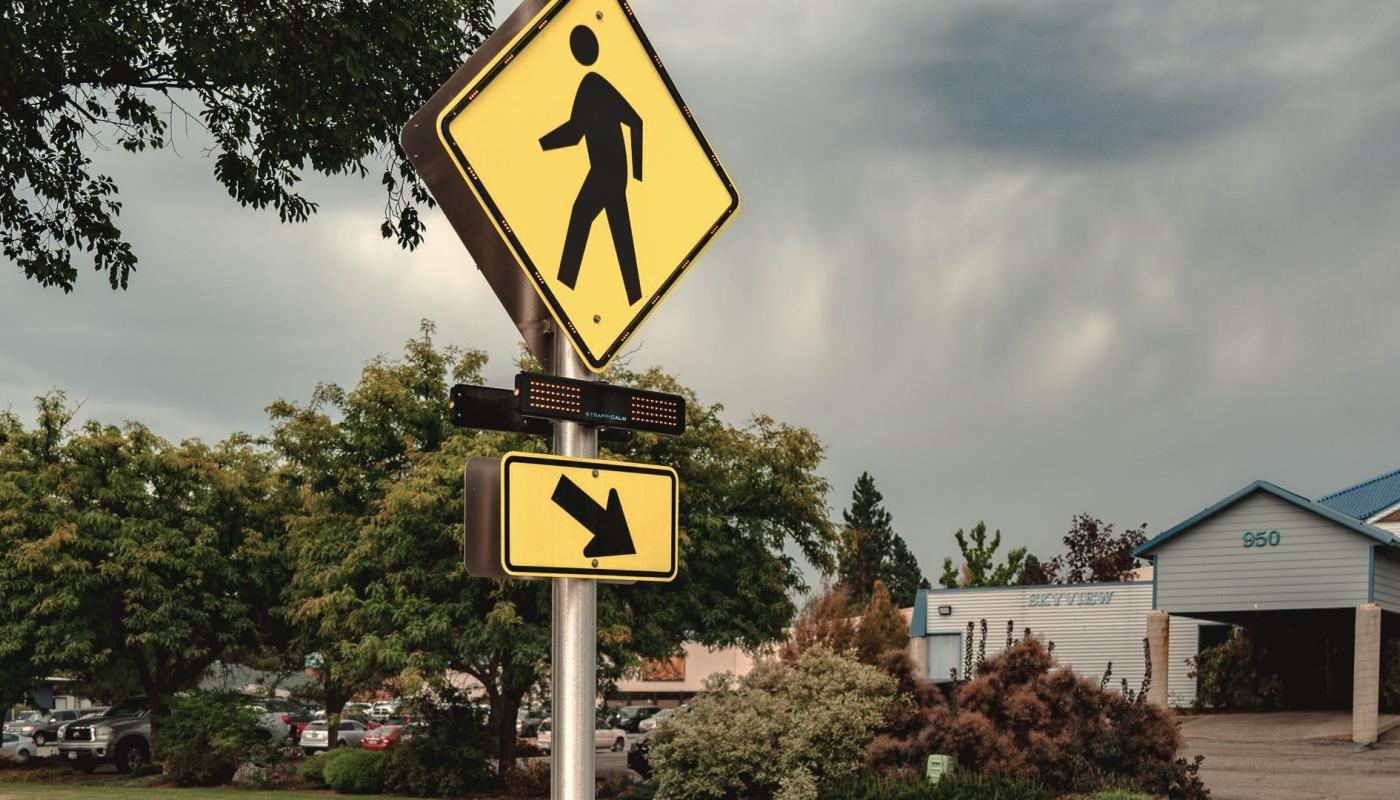Introduction
In 2022, pedestrian fatalities in the U.S. reached a 40-year high, with 7,522 lives lost. As cities and towns grapple with how to make streets safer, one solution is gaining attention for its effectiveness, affordability, and ease of implementation: Rectangular Rapid Flashing Beacons (RRFBs).
These bright, attention-grabbing devices are helping drivers and pedestrians connect more safely at unsignalized crossings, especially where installing a full traffic signal may not be necessary or feasible.
What Are RRFBs?
Rectangular Rapid Flashing Beacons (RRFBs) are pedestrian-activated warning systems used at uncontrolled crosswalks to improve visibility and encourage driver compliance. When a pedestrian pushes a button, bright yellow rectangular LED lights begin flashing in an irregular, attention-grabbing pattern that’s hard to ignore.
These beacons are typically mounted on posts at either end of a crosswalk (sometimes in a median if available), creating a visual signal for drivers to slow down and yield to people crossing.
RRFBs vs. HAWK Crossings: What’s the Difference?
While RRFBs enhance driver awareness at crossings, High-Intensity Activated Crosswalks (HAWKs) go a step further by mimicking traffic lights. HAWKs feature a three-lens signal (two red over one yellow) that changes to a steady red, requiring vehicles to stop when activated.
HAWK signals are ideal for higher-speed or multilane roadways with greater traffic volumes, whereas RRFBs offer a more cost-effective, less disruptive option for midblock crossings, trail connections, or school zones.
Benefits of RRFBs
RRFBs offer numerous advantages that make them an increasingly popular choice for traffic engineers and urban planners:
- Improved Driver Yield Rates
- Research shows that RRFBs can increase driver yield rates by up to 98%. Their unpredictable flash pattern captures attention far better than standard warning signs or static lights.
- Research shows that RRFBs can increase driver yield rates by up to 98%. Their unpredictable flash pattern captures attention far better than standard warning signs or static lights.
- Cost-Effective Solution
- Compared to HAWK signals or full traffic lights, RRFBs are significantly less expensive to install and maintain, which is an important factor for cities working with limited transportation budgets.
- Compared to HAWK signals or full traffic lights, RRFBs are significantly less expensive to install and maintain, which is an important factor for cities working with limited transportation budgets.
- Minimal Impact on Traffic Flow
- One of the key benefits of RRFBs is that they only affect traffic flow when activated. Because RRFBs are pedestrian-activated, traffic moves freely when no one is crossing. This makes them ideal for roads where constant signal control isn’t needed.
- One of the key benefits of RRFBs is that they only affect traffic flow when activated. Because RRFBs are pedestrian-activated, traffic moves freely when no one is crossing. This makes them ideal for roads where constant signal control isn’t needed.
- Flexible Installation Options
- RRFBs are effective at a wide range of locations, including:
- Midblock and trail crossings
- School zones
- Multilane roadways
- Areas with long gaps between traffic signals
- Midblock and trail crossings
- They’re especially helpful in places with limited visibility or high pedestrian traffic.
- RRFBs are effective at a wide range of locations, including:
- Energy Efficiency
- Most RRFB systems today are solar-powered, which helps reduce energy costs, avoids complex electrical work, and supports sustainability goals.
Implementation and Effectiveness
Cities implementing RRFBs have reported substantial improvements in pedestrian safety. The enhanced visibility they provide is especially valuable in areas with:
- Higher traffic volumes
- Limited sight distances
- Higher pedestrian activity
- Multiple lanes of traffic
- School zones and routes
- Trail crossings
By installing RRFBs at strategic locations, communities can create safer pedestrian environments without significantly impacting traffic flow. The on-demand nature of these systems means they only activate when needed, minimizing unnecessary delays for motorists.
As cities continue prioritizing safety, accessibility, and walkability, Rectangular Rapid Flashing Beacons are proving to be a smart investment. Their ability to increase driver compliance, minimize disruption, and lower infrastructure costs makes them a go-to tool for traffic engineers and planners alike.
Want to explore how RRFBs can improve pedestrian safety in your community? Contact us to learn more about our RRFB solutions!
